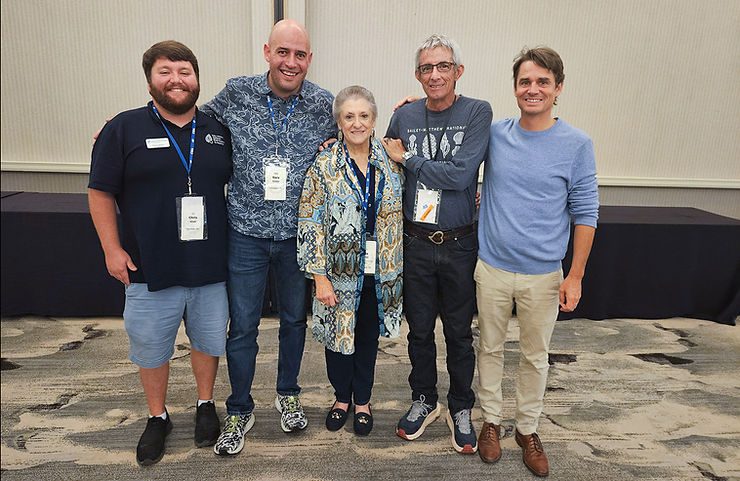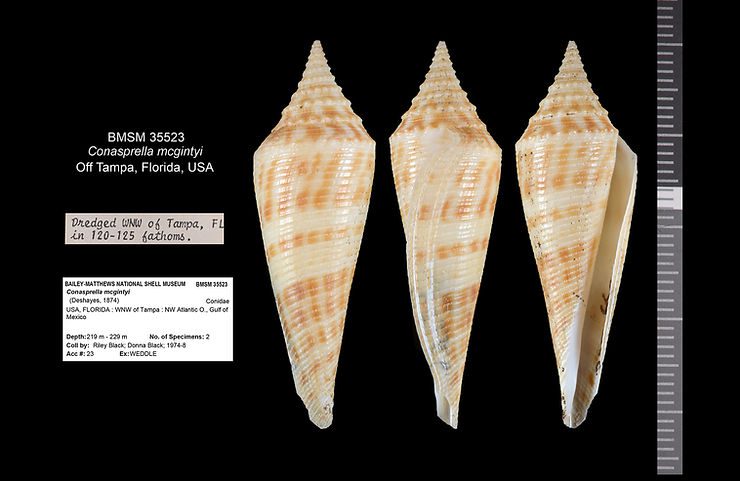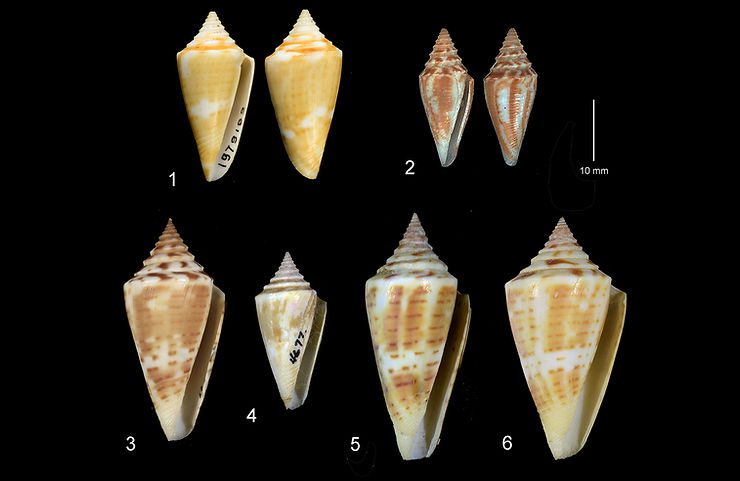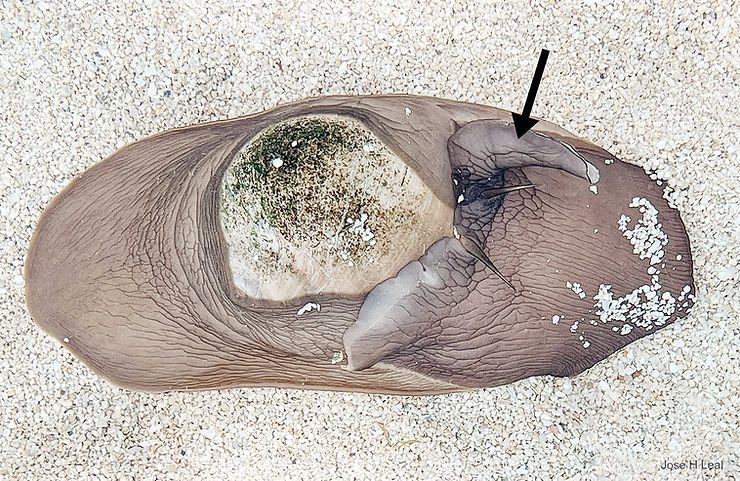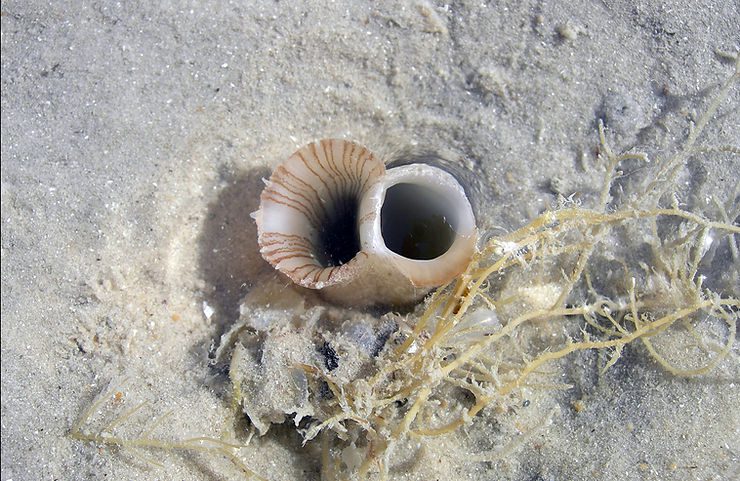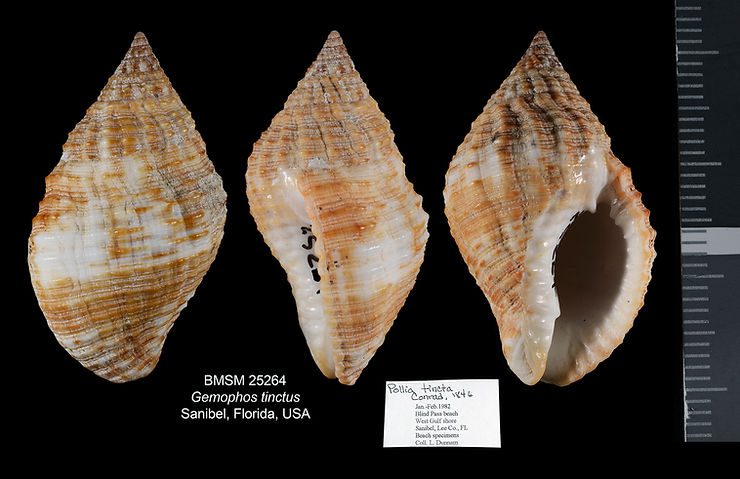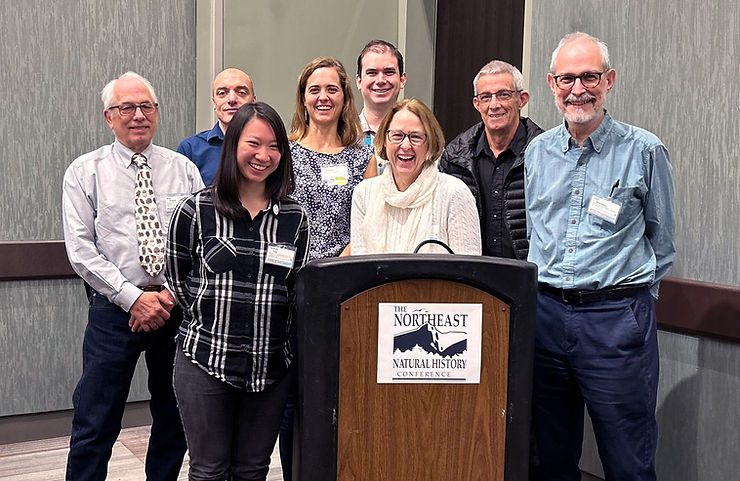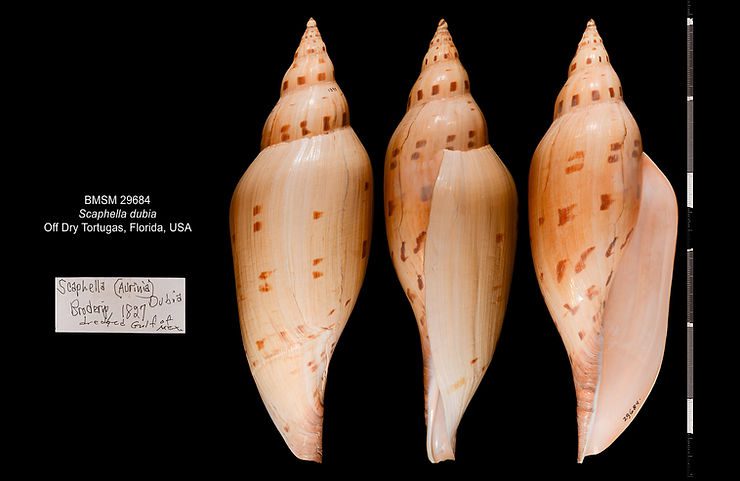
Shell of the Week: The Dubious Volute
Aurinia dubia (Broderip, 1827) is the largest volute (family Volutidae) species in the northwestern Atlantic Ocean, reaching 197 mm (about 7.8 inches) in length. The species has a relatively thin, tan-colored shell with sparse reddish-brown spots. The Dubious Volute can be found in relatively deep water, from 60 to 400 m (about 200 to 1,300 ft), from North Carolina south to both sides of Florida and the Gulf of Mexico.#auriniadubia #scaphelladubia #volutidae #drytortugas
